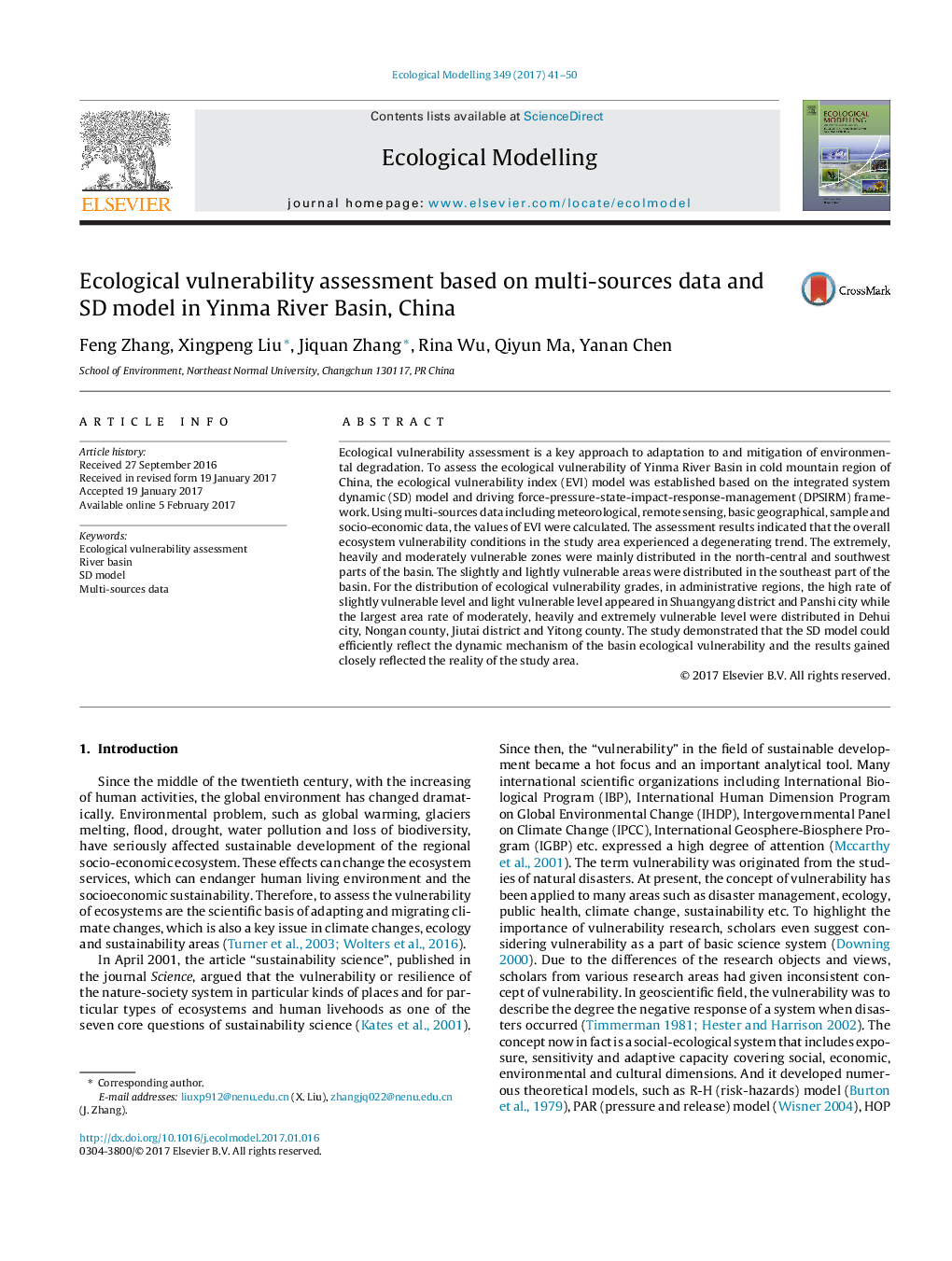| Article ID | Journal | Published Year | Pages | File Type |
|---|---|---|---|---|
| 5742290 | Ecological Modelling | 2017 | 10 Pages |
â¢A new ecological vulnerability index(EVI) model based on the SD model and DPSIRM framework was established.â¢Using multi-sources data, the values of EVI were calculated.â¢SD model could efficiently reflect the dynamic mechnism of the basin ecological vulnerability.
Ecological vulnerability assessment is a key approach to adaptation to and mitigation of environmental degradation. To assess the ecological vulnerability of Yinma River Basin in cold mountain region of China, the ecological vulnerability index (EVI) model was established based on the integrated system dynamic (SD) model and driving force-pressure-state-impact-response-management (DPSIRM) framework. Using multi-sources data including meteorological, remote sensing, basic geographical, sample and socio-economic data, the values of EVI were calculated. The assessment results indicated that the overall ecosystem vulnerability conditions in the study area experienced a degenerating trend. The extremely, heavily and moderately vulnerable zones were mainly distributed in the north-central and southwest parts of the basin. The slightly and lightly vulnerable areas were distributed in the southeast part of the basin. For the distribution of ecological vulnerability grades, in administrative regions, the high rate of slightly vulnerable level and light vulnerable level appeared in Shuangyang district and Panshi city while the largest area rate of moderately, heavily and extremely vulnerable level were distributed in Dehui city, Nongan county, Jiutai district and Yitong county. The study demonstrated that the SD model could efficiently reflect the dynamic mechanism of the basin ecological vulnerability and the results gained closely reflected the reality of the study area.
